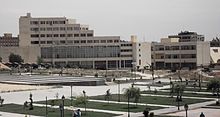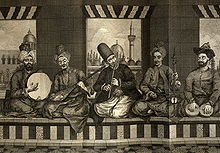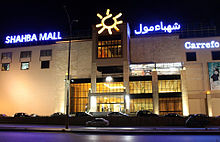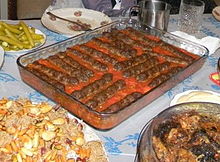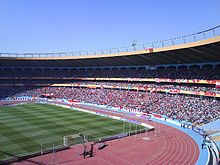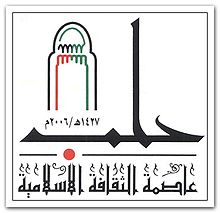Dee Finney's blog
John 14:6 Jesus answered, "I am the way and the truth and the LIFE ...
Jesus saith unto him, I am the way, the truth, and the life: no man cometh unto the Father, but by me.
|
The meaning of the number 144 is based on the meaning of the number
12 because it is 12 x 12 and God used it this way when He sealed the
144,000 in Revelation 7. The number 12 is itself a symbol of the
"people of God" which was first established in the 12 tribes of
Israel and then confirmed in the 12 apostles and both are united in
the symbol of the New Jerusalem:
Revelation 21:10 And he carried me away in the spirit to a great
and high mountain, and shewed me that great city, the
holy Jerusalem, descending out of heaven from God, 11
Having the glory of God: and her light was like unto a stone
most precious, even like a jasper stone, clear as crystal; 12
And had a wall great and high, and had twelve
gates, and at the gates twelve angels, and names written
thereon, which are the names of the
twelve tribes of the children of Israel: 13 On the east
three gates; on the north three gates; on the south three gates;
and on the west three gates. 14 And the wall of the city had twelve
foundations, and in them the names of the
twelve apostles of the Lamb. 15 ¶ And he that talked
with me had a golden reed to measure the city, and the gates
thereof, and the wall thereof. 16 And the city lieth foursquare,
and the length is as large as the breadth: and he measured the
city with the reed, twelve
thousand furlongs. The length and the breadth and the
height of it are equal. 17 And he measured the wall thereof, an hundred
and forty and four cubits,
according to the measure of a man, that is, of the angel.
Look at all those twelves!
Revelation 3:12 Him that overcometh will I make a
pillar in the temple of my God, and he shall go no more
out: and I will write upon him the name of my God, and the name
of the city of my God, which isnew Jerusalem,
which cometh down out of heaven from my God: and I will write
upon him my new name.
Obviously, the temple and the city are not literal, since we are
made to be "pillars" in the temple. This is confirmed again by Paul:
2 Corinthians 6:16 And what agreement hath the temple of God
with idols? for ye
are the temple of the living God; as God hath said, I
will dwell in them, and walk in them; and I will be their God,
and they shall be my people.
This is exactly what is said concerning the New Jerusalem:
Revelation 21:2 And I John saw the holy city, new
Jerusalem, coming down from God out of heaven, prepared
as a bride adorned for her husband. 3 And I heard a great voice
out of heaven saying, Behold, the tabernacle of God is with men, and
he will dwell with them, and they shall be his people, and God
himself shall be with them, and be their God.
And there is another level of insight to be found by examining
gematria, the numerical values of the Greek and Hebrew words of
Scripture. In Greek, the phrase "the elect" sums to exactly 144!
The Elect (
η εκλογη , he ekloge) = 8 + 5 + 20 + 30 + 70 + 3 + 8 =
144
Isn't that amazing? The pattern relating the People of God to the
Number 12 was first established in the Hebrew Old Testament, and
here we see that it coheres with the alphanumeric structure of the
Greek New Testament!These are the ideas off the top of my head. I wrote more about the meaning of the Number 12 in the articles for Spoke 12 of the Bible Wheel. The most pertinent is probable this one called Twelve and Scripture. |
Paul taught the way of divine love through love in action, which means moving from contemplated love to putting forth the effort to be loving in deeds and in works. He helps clarify many things concerning divine love; for example, true compassion lifts up another’s soul, whereas human sympathy allows the soul to wallow in its human problems without progressing on the spiritual path. He is the perfect master to help us prepare for receiving the Holy Spirit’s gift of discerning of spirits.
Paul applauded our innate beauty as a magnificent creation of God, and champions the pursuit of our Higher Self. To assist in this endeavor, he teaches how to define our Christhood by perfecting our soul and developing the intuitive and creative faculties of our heart and heart chakra.
Aleppo
|
Aleppo ﺣﻠﺐ Ḥalab |
|
|---|---|
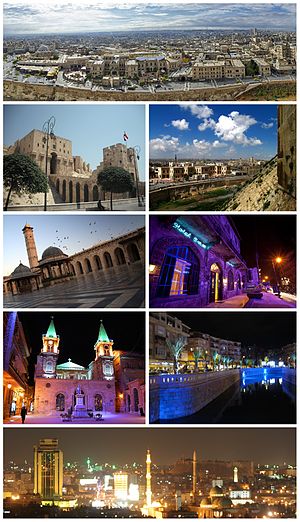
Ancient City of Aleppo
Aleppo Citadel • The entrance to al-Madina Souq Great Mosque of Aleppo • Baron Hotel Saint Elias Cathedral • Queiq River Panorama of Aleppo at night |
|
| Nickname(s): Ash-Shahbaa[1] | |
|
|
|
| Coordinates: 36°13′N 37°10′E | |
| Country |
|
| Governorate | Aleppo Governorate |
| District | Mount Simeon (Jabal Semaan) |
| Government | |
| • Governor | Wahid Aqqad |
| • Mayor | Ayman Hallaq |
| Area | |
| • City | 190 km2 (70 sq mi) |
| Elevation | 379 m (1,243 ft) |
| Population (2004 census) | |
| • City | 2,132,100 |
| • Density | 11,222/km2 (29,060/sq mi) |
| • Metro | 2,181,061 |
| Time zone | EET (UTC+2) |
| • Summer (DST) | EEST (UTC+3) |
| Area code(s) |
Country code: 963 City code: 21 |
| Demonym | Aleppine |
| Website | www.alp-city.org |
| Sources: Aleppo city area[2] Sources: City population[3] | |
Aleppo (Arabic: ﺣﻠﺐ / ALA-LC: Ḥalab, IPA: [ˈħalab]) is the largest city in Syria and serves as the capital of Aleppo Governorate, the most populous Syrian governorate. It is located in northwestern Syria 310 kilometres (193 miles) from Damascus. With an official population of 2,132,100 (2004 census), it is also one of the largest cities in the Levant. For centuries, Aleppo was the region of Syria's largest city and the Ottoman Empire's third, after Constantinople and Cairo.
Aleppo is one of the oldest continuously inhabited cities in the world; it has been inhabited since perhaps as early as the 6th millennium BC.Excavations at Tell as-Sawda and Tell al-Ansari, just south of the old city of Aleppo, show that the area was occupied since at least the latter part of the 3rd millennium BC; and this is also when Aleppo is first mentioned in cuneiform tablets unearthed in Ebla and Mesopotamia, in which it is noted for its commercial and military proficiency.[ Such a long history is probably due to its being a strategic trading point midway between the Mediterranean Sea and Mesopotamia (i.e. modern Iraq).
The city's significance in history has been its location at the end of the Silk Road, which passed through central Asia and Mesopotamia. When theSuez Canal was inaugurated in 1869, trade was diverted to sea and Aleppo began its slow decline. At the fall of the Ottoman Empire after World War I, Aleppo ceded its northern hinterland to modern Turkey, as well as the important railway connecting it to Mosul. Then in the 1940s it lost its main access to the sea, Antioch and Alexandretta, also to Turkey. Finally, the isolation of Syria in the past few decades further exacerbated the situation, although perhaps it is this very decline that has helped to preserve the old city of Aleppo, its medieval architecture and traditional heritage. It won the title of the "Islamic Capital of Culture 2006", and has also witnessed a wave of successful restorations of its historic landmarks, up until the start of the Syrian Civil War in 2011.
Etymology
Aleppo is the common modern-day English name for the city. It was known in antiquity as Khalpe, Khalibon, and to the Greeks and Romans as Beroea (Βέροια). During the Crusades, and again during the French Mandate for Syria and the Lebanon, the name Alep was used. However, "Aleppo" is an Italianised version of this.
The original ancient name of Halab has been preserved as the current Arabic name of the city. It is of obscure origin. Some have proposed that Halab means 'iron' or 'copper' in Amorite languages since it was a major source of these metals in antiquity. However, according to the 20th century historian sheikh Kamel al-Ghazzi and contemporary linguist priest Barsoum Ayyoub, the name of Halab (and consequently Aleppo) is derived from the Aramaic word Halaba which means white, referring to the colour of soil and marble abundant in the area.The modern-day Arabic nickname of the city, ash-Shabaa (Arabic: الشهباء), which means the white-coloured, is also derived from the famous white marble of Aleppo.
There is a legend that the name Halab means "gave out milk", coming from the ancient tradition that Abraham gave milk to travelers as they moved throughout the region. The colour of his cows was white (Arabic: شهباء shahbaa); therefore the city was also called Halab ash-Shahbaa ("he milked the white-coloured"). However, this story is a myth and has nothing to do with reality.
From the 11th century it was common Rabbinic usage to apply the term "Aram-Zobah" to the area of Aleppo, and this is perpetuated by Syrian Jews up to this day. The Bible contains at least 13 references to Zobah.
Geography and climate
Aleppo lies about 120 km (75 mi) inland from theMediterranean Sea, on a plateau 380 m (1,250 ft) above sea level, 45 km (28 mi) east of the Syrian-Turkish border checkpoint of Bab al-Hawa. The city is surrounded by farmlands from the north and the west, widely cultivated with olive and pistachio trees. To the east, Aleppo approaches the dry areas of the Syrian Desert.
The city was originally founded a few kilometres south of the location of the current old city, on the right bank of Queiq River which arises from the Aintab plateau in the north and runs through Aleppo southward to the fertile country of Qinnasrin. The old city of Aleppo lies on the left bank of the Queiq. It was surrounded by a circle of eight hills surrounding a prominent central hill on which the castle (originally a temple dating to the 2nd millennium BC) was erected. The radius of the circle is about 10 km (6.2 mi). The hills are Tell as-Sawda, Tell ʕāysha, Tell as-Sett, Tell al-Yāsmīn (Al-ʕaqaba), Tell al-Ansāri (Yārūqiyya), ʕan at-Tall, al-Jallūm, Baḥsīta. The old city was enclosed within an ancient wall that was last rebuilt by the Mamlukes. The wall has since disappeared. It had nine gates and was surrounded by a broad deep ditch.[
Occupying an area of more than 190 km2 (73 sq mi), Aleppo is one of the fastest growing cities in the Middle East. According to the new major plan of the city adopted in 2001, it is envisaged to increase the total area of Aleppo up to 420 km2 (160 sq mi) by the end of 2015.
Aleppo has a hot semi-arid climate (Köppen: BSh). The mountain series that run along the Mediterranean coast, namely Mount Alawites and Mount Amanus, largely block the effects of the Mediterranean on climate (rain shadow effect). The average temperature is 18 to 20 °C (64 to 68 °F). The average precipitation is 395 mm (15.55 in). 80% of precipitation occurs between October and March. Snow is rare. Average humidity is 58%.
| Climate data for Aleppo | |||||||||||||
|---|---|---|---|---|---|---|---|---|---|---|---|---|---|
| Month | Jan | Feb | Mar | Apr | May | Jun | Jul | Aug | Sep | Oct | Nov | Dec | Year |
| Record high °C (°F) |
17 (63) |
21 (70) |
31 (88) |
34 (93) |
41 (106) |
47 (117) |
46 (115) |
43 (109) |
41 (106) |
37 (99) |
30 (86) |
18 (64) |
47 (117) |
| Average high °C (°F) |
10.3 (50.5) |
12.6 (54.7) |
16.9 (62.4) |
22.6 (72.7) |
28.7 (83.7) |
33.6 (92.5) |
36.2 (97.2) |
36.1 (97) |
33.2 (91.8) |
27.0 (80.6) |
16.8 (62.2) |
11.9 (53.4) |
23.8 (74.9) |
| Average low °C (°F) |
1.7 (35.1) |
2.4 (36.3) |
5.0 (41) |
8.9 (48) |
13.5 (56.3) |
18.1 (64.6) |
20.9 (69.6) |
20.9 (69.6) |
17.3 (63.1) |
12.4 (54.3) |
6.4 (43.5) |
3.3 (37.9) |
10.9 (51.6) |
| Record low °C (°F) |
−13 (9) |
−10 (14) |
−7 (19) |
−2 (28) |
0 (32) |
9 (48) |
16 (61) |
15 (59) |
7 (45) |
5 (41) |
−3 (27) |
−8 (18) |
−13 (9) |
| Precipitation mm (inches) |
60.3 (2.374) |
52.0 (2.047) |
46.1 (1.815) |
33.6 (1.323) |
17.9 (0.705) |
2.3 (0.091) |
0.1 (0.004) |
0.3 (0.012) |
2.2 (0.087) |
19.2 (0.756) |
35.2 (1.386) |
59.6 (2.346) |
328.8 (12.946) |
| Avg. precipitation days (≥ 0.1 mm) | 13 | 14 | 10 | 7 | 4 | 1 | 0 | 0 | 1 | 4 | 7 | 11 | 72 |
| Mean monthly sunshine hours | 120.9 | 140.0 | 198.4 | 243.0 | 319.3 | 366.0 | 387.5 | 365.8 | 303.0 | 244.9 | 186.0 | 127.1 | 3,001.9 |
| Source #1: World Meteorological Organization, Hong Kong Observatory (sun 1961–1990) | |||||||||||||
| Source #2: BBC Weather (record highs and lows) | |||||||||||||
History
Pre-history and pre-classical era
Aleppo has scarcely been touched by archaeologists, since the modern city occupies its ancient site. The site has been occupied from around 5000 BC, as excavations in Tallet Alsauda show.
Aleppo appears in historical records as an important city much earlier than Damascus. The first record of Aleppo comes from the third millennium BC, in the Ebla tablets when Aleppo was referred to as Ha-lam, some historians such as Wayne Horowitz identify Aleppo with the capital of an independent kingdom closely related to Ebla, known as Armi, although this identification is contested. the city had a religious Importance, The main temple of the storm god Hadad was located on the citadel hill in the center of the city, and the city was known as the city of Hadad.
Naram-Sin of Akkad mention his destruction of Ebla and Armani/Armanum, in the 23rd century BC. but the identification of Armani in the inscription of Naram-Sim as Armi in the Eblaite tablets is heavily debated, however, its confirmed that the whole of northern Syria including Ebla and Aleppo was part of the Akkadian empire during the reign of Naram-Sin.
In the Old Babylonian period, Aleppo's name appears as Ḥalab (Ḥalba) for the first time. Aleppo was the capital of the important Amorite dynasty of Yamḥad. The kingdom of Yamḥad (c. 1800–1525 BC), alternatively known as the 'land of Ḥalab,' was the most powerful in the Near East during the reign of Yarim-Lim I. Yamḥad was devastated by the Hittites under Mursilis I in the 16th century BC. However, it soon resumed its leading role in Syria when the Hittite power in the region waned due to internal strife.
Taking advantage of the power vacuum in the region, Parshatatar, king of the Hurrian kingdom of Mitanni instigated a rebellion that ended the life of Yamhad last king Ilim-Ilimma I in c. 1525 BC, Subsequently Parshatatar conquered Aleppo and the city found itself on the frontline in the struggle between the Mitanni, the Hittites and Egypt. The Hittite king Suppiluliumas permanently defeated Mitanni and conquered Aleppo in the 14th century BC, Suppiluliumas installed his son Telepinus as king and a dynasty of Suppiluliumas descendents ruled Aleppo until the Late Bronze Age collapse.
Aleppo had cultic importance to the Hittites for being the center of worship of the Storm-God. this religious importance continued after the collapse of the Hittite kingdom in the 12th century BC, when Aleppo became part of the Aramaean Syro-Hittite kingdom of Palistin, whose king renovated the temple of Hadad which was discovered in 2003.
At the beginning of the 1st millennium BC, Aleppo became part of Bit Agusi (which had its capital at Arpad) . Bit Agusi along with Aleppo was conquered by the Assyrians In the 8th century BC and became part of the Neo-Assyrian Empire until the late 7th century BC, before passing through the hands of the Neo-Babylonians and the Achamenid Persians.
Classical antiquity
Alexander the Great took over the city in 333 BC. Seleucus Nicator established a Hellenic settlement in the site between 301 and 286 BC. He called it Beroea (Βέροια), after Beroea in Macedon.
Northern Syria was the center of gravity of the Hellenistic colonizing activity, and therefore of Hellenistic culture in the Seleucid Empire. As did other Hellenized cities of the Seleucid kingdom, Beroea probably enjoyed a measure of local autonomy, with a local civic assembly or boulē composed of free Hellenes.
Beroea remained under Seleucid rule until 88 BC when Syria was occupied by Tigranes the Great and Beroea became part of the Kingdom of Armenia. After the Roman victory over Tigranes, Syria was handed over to Pompey in 64 BC, at which time they became a Roman province. Rome's presence afforded relative stability in northern Syria for over three centuries. Although the province was administered by a legate from Rome, Rome did not impose its administrative organization on the Greek-speaking ruling class.
The Roman era saw an increase in the population of northern Syria that accelerated under the Byzantines well into the 5th century. In Late Antiquity, Beroea was the second largest Syrian city after Antioch, the capital of Syria and the third largest city in the Roman world. Archaeological evidence indicates a high population density for settlements between Antioch and Beroea right up to the 6th century. This agrarian landscape holds now the remains of large estate houses and churches such as the Church of Saint Simeon Stylites. Saint Maron of the Maronite Church was probably born in this region; his tomb is located at Brad to the west of Aleppo.
Beroea is mentioned in 2 Macc. 13:3.
Medieval period
The Sassanid Persians invaded and controlled Syria briefly in the early 7th century. Soon after Aleppo fell to Arabs under Abu Ubaidah ibn al Jarrah in 637. In 944, it became the seat of an independent Emirate under the Hamdanid prince Sayf al-Daula, and enjoyed a period of great prosperity, being home to the great poet al-Mutanabbiand the philosopher and polymath al-Farabi. The city was sacked by a resurgent Byzantine Empire in 962, while Byzantine forces occupied it briefly from 974 to 987. The city and its Emirate became an Imperial vassal from 969 until the Byzantine–Seljuk Wars. The city was twice besieged by the Crusaders, in 1098 and in 1124, but was not conquered.
On 9 August 1138, a deadly earthquake ravaged the city and the surrounding area. Although estimates from this time are very unreliable, it is believed that 230,000 people died, making it the seventh deadliest earthquake in recorded history.
The city came under the control of Saladin and then the Ayyubid Dynasty starting from 1183.
On 24 January 1260, the city was taken by the Mongols under Hulagu in alliance with their vassals the Frank knights of the ruler of Antioch Bohemond VI and his father-in-law the Armenian ruler Hetoum I. The city was poorly defended by Turanshah, and as a result the walls fell after six days of bombardment, and the citadel fell four weeks later. The Muslim population was massacred and many Jews were also killed. The Christian population was spared. Turanshah was shown unusual respect by the Mongols, and was allowed to live because of his age and bravery. The city was then given to the former Emir of Homs, al-Ashraf, and a Mongol garrison was established in the city. Some of the spoils were also given to Hethoum I for his assistance in the attack. The Mongol Army then continued on to Damascus, which surrendered, and the Mongols entered the city on 1 March 1260.
In September 1260, the Egyptian Mamluks negotiated for a treaty with the Franks of Acre which allowed them to pass through Crusader territory unmolested, and engaged the Mongols at the Battle of Ain Jalut on 3 September 1260. The Mamluks won a decisive victory, killing the Mongols' Nestorian Christian general Kitbuqa, and five days later they had re-taken Damascus. Aleppo was recovered by the Muslims within a month, and a Mamluk governor placed to govern the city. Hulagu sent troops to try to recover Aleppo in December. They were able to massacre a large number of Muslims in retaliation for the death of Kitbuqa, but after a fortnight could make no other progress and had to retreat.
The Mamluk governor of the city became insubordinate to the central Mamluk authority in Cairo, and in Autumn 1261 the Mamluk leader Baibars sent an army to reclaim the city. In October 1271, the Mongols took the city again, attacking with 10,000 horsemen from Anatolia, and defeating the Turcomantroops who were defending Aleppo. The Mamluk garrisons fled to Hama, until Baibars came north again with his main army, and the Mongols retreated.
On 20 October 1280, the Mongols took the city again, pillaging the markets and burning the mosques. The Muslim inhabitants fled for Damascus, where the Mamluk leader Qalawun assembled his forces. When his army advanced, the Mongols again retreated, back across the Euphrates.
In 1400, the Mongol-Turkic leader Tamerlane captured the city again from the Mamluks. He massacred many of the inhabitants, ordering the building of a tower of 20,000 skulls outside the city. After the withdrawal of the Mongols, all the Muslim population returned to Aleppo. On the other hand, Christians who left the city during the Mongol invasion, were unable to resettle back in their own quarter in the old town, a fact that led them to establish a new neighbourhood in 1420, built at the northern suburbs of Aleppo outside the city walls, to become known as al-Jdeydeh quarter (for "new district" in Arabic).
Ottoman era
Aleppo became part of the Ottoman Empire in 1516, when the city had around 50,000 inhabitants. It was the centre of the Aleppo Eyalet; the rest of what later became Syria was part of either the eyalets of Damascus, Tripoli, Sidon or Raqqa. Following the Ottoman provincial reform of 1864 Aleppo became the centre of the newly constituted Vilayet of Aleppo in 1866.
Thanks to its strategic geographic location on the trade route between Anatolia and the east, Aleppo rose to high prominence in the Ottoman era, at one point being second only to Constantinople in the empire. By the middle of the 16th century, Aleppo had displaced Damascus as the principal market for goods coming to the Mediterranean region from the east. This is reflected by the fact that the Levant Company of London, a joint-trading company founded in 1581 to monopolize England's trade with the Ottoman Empire, never attempted to settle a factor, or agent, in Damascus, despite having had permission to do so. Aleppo served as the company's headquarters until the late 18th century.
As a result of the economic development, many European states had opened consulates in Aleppo during the 16th and the 17th centuries, such as the consulate of the Republic of Venice in 1548, the consulate of France in 1562, the consulate of England in 1583 and the consulate of the Netherlands in 1613.
However, the prosperity Aleppo experienced in the 16th and 17th century started to fade as silk production in Iran went into decline with the fall of the Safavid dynasty in 1722. By mid-century, caravans were no longer bringing silk from Iran to Aleppo, and local Syrian production was insufficient for Europe's demand. European merchants left Aleppo and the city went into an economic decline that was not reversed until the mid-19th century when locally produced cotton and tobacco became the principal commodities of interest to the Europeans.
The economy of Aleppo was badly hit by the opening of the Suez Canal in 1869. This, in addition to political instability that followed the implementation of significant reforms in 1841 by the central government, contributed to Aleppo's decline and the rise of Damascus as a serious economic and political competitor with Aleppo.
Reference is made to the city in 1606 in William Shakespeare's 'Macbeth.' The witches torment the captain of the ship the Tiger which was headed to Aleppo from England but endured a 567- day voyage before returning unsuccessfully to port. Reference is also made to the city in Shakespeare's 'Othello' when Othello speaks his final words (ACT V, ii, 349f.): "Set you down this / And say besides that in Aleppo once, / Where a malignant and a turbanned Turk /Beat a Venetian and traduced the state, / I took by th' throat the circumcised dog / And smote him—thus!" (Arden Shakespeare Edition, 2004). The English naval chaplain Henry Teonge describes in his diary a visit he paid to the city in 1675, when there was a colony of Western European merchants living there.
The city remained Ottoman until the empire's collapse, but was occasionally riven with internal feuds as well as attacks of cholera from 1823. Around 20–25 percent of the population died of plague in 1827. In 1850 a Muslim mob attacked Christian neighbourhoods, tens of Christians were killed and several churches looted. Janissary rebels installed their own government when the Ottoman governor fled. The Ottomans took over the city weeks later killing some 5,000. By 1901, the city's population was around 110,000.
At the end of World War I, the Treaty of Sèvres made most of the Province of Aleppo part of the newly established nation of Syria, while Cilicia was promised by France to become an Armenian state. However, Kemal Atatürk annexed most of the Province of Aleppo as well as Cilicia to Turkey in his War of Independence. The Arab residents in the province (as well as the Kurds) supported the Turks in this war against the French, a notable example being Ibrahim Hanano who directly coordinated with Atatürk and received weaponry from him. The outcome, however, was disastrous for Aleppo, because as per the Treaty of Lausanne, most of the Province of Aleppo was made part of Turkey with the exception of Aleppo and Alexandretta; thus, Aleppo was cut from its northern satellites and from the Anatolian cities beyond on which Aleppo depended heavily in commerce. Moreover, the Sykes-Picot division of the Near East separated Aleppo from most ofMesopotamia, which also harmed the economy of Aleppo. The situation was exacerbated further in 1939 when Alexandretta was annexed to Turkey, thus depriving Aleppo of its main port of Iskenderun and leaving it in total isolation within Syria.
French mandate
The State of Aleppo was declared by the French General Henri Gouraud in September 1920 as part of a French scheme to make Syria easier to control by dividing it into several smaller states. France became more hostile to the idea of a united Syria after the Battle of Maysaloun.
By separating Aleppo from Damascus, Gouraud wanted to capitalize on a traditional state of competition between the two cities and turn it into political division. The people in Aleppo were unhappy with the fact that Damascus was chosen as capital for the new nation of Syria. Gouraud sensed this sentiment and tried to manipulate it by making Aleppo the capital of a large and wealthier state with which it would have been hard for Damascus to compete. The State of Aleppo as drawn by France contained most of the fertile area of Syria: the fertile countryside of Aleppo in addition to the entire fertile basin of river Euphrates. The state also had access to sea via the autonomous Sanjak of Alexandretta. On the other hand, Damascus, which is basically an oasis on the fringes of the Syrian Desert, had neither enough fertile land nor access to sea. Basically, Gouraud wanted to lure Aleppo by giving it control over most of the agricultural and mineral wealth of Syria so that it would never want to unite with Damascus again.
The limited economic resources of the Syrian states made the option of completely independent states undesirable for France, because it threatened an opposite result: the states collapsing and being forced back into unity. This was why France proposed the idea of a Syrian federation that was realized in 1923. Initially, Gouraud envisioned the federation as encompassing all the states, even Lebanon. In the end however, only three states participated: Aleppo, Damascus, and the Alawite State. The capital of the federation was Aleppo at first, but it was relocated to Damascus. The president of the federation was Subhi Barakat, an Antioch-born politician from Aleppo.
The federation ended in December 1924, when France merged Aleppo and Damascus into a single Syrian State and separated the Alawite State again. This action came after the federation decided to merge the three federated states into one and to take steps encouraging Syria's financial independence, steps which France viewed as too much.
When the Syrian Revolt erupted in southern Syria in 1925, the French held in Aleppo State new elections that were supposed to lead to the breaking of the union with Damascus and restore the independence of Aleppo State. The French were driven to believe by pro-French Aleppine politicians that the people in Aleppo were supportive of such a scheme. After the new council was elected, however, it surprisingly voted to keep the union with Damascus. Syrian nationalists had waged a massive anti-secession public campaign that vigorously mobilized the people against the secession plan, thus leaving the pro-French politicians no choice but to support the union. The result was a big embarrassment for France, which wanted the secession of Aleppo to be a punitive measure against Damascus, which had participated in the Syrian Revolt. This was the last time that independence was proposed for Aleppo.
Post-independence
The period immediately following independence from France was marked by increasing rivalry between Aleppo and Damascus. Aleppo feverishly called for an immediate union between Syria and Hashimite Iraq, a demand that was firmly rejected by Damascus. Instead, Damascus favoured a pro-Egyptian, pro-Saudi orientation and actively participated in the establishment of the Arab League in Alexandria in 1944, an organization that was seen by many Arab nationalists as a 'conspiracy' aimed against the unification of the Fertile Crescent under the Hashimites.
The increasing disagreements between Aleppo and Damascus led eventually to the split of the National Block into two factions: the National Party, established in Damascus in 1946, and the People's Party, established in Aleppo in 1948 by Rushdi Kikhya andNazim Qudsi. An underlying cause of the disagreement, in addition to the union with Iraq, was Aleppo's intention to relocate the capital from Damascus. The issue of the capital became an open debate matter in 1950 when the Popular Party presented a constitution draft that called Damascus a "temporary capital."
The first coup d'état in modern Syrian history was carried out in March 1949 by an army officer from Aleppo, Hussni Zaim. However, lured by the absolute power he enjoyed as a dictator, Zaim soon developed a pro-Egyptian, pro-Western orientation and abandoned the cause of union with Iraq. This incited a second coup only four months after his. The second coup, led by Sami Hinnawi (also from Aleppo), empowered the Popular Party and actively sought to realize the union with Iraq. The news of an imminent union with Iraq incited a third coup the same year: in December 1949, Adib Shishakly led a coup preempting a union with Iraq that was about to be declared.
Soon after Shishakly's domination ended in 1954, a union with Egypt under Gamal Abdul Nasser was implemented in 1958. The union, however, collapsed only two years later when a junta of young Damascene officers carried out a separatist coup. Aleppo resisted the separatist coup, but eventually it had no choice but to recognize the new regime. The new regime tried to absorb Aleppo's dissent by appointing both a president and premier from Aleppo—Nazim Qudsi and Marouf Dawalibi.
In March 1963 a coalition of Baathists, Nasserists, and Socialists launched a new coup whose declared objective was to restore the union with Egypt. However, the new regime only restored the flag of the union. Soon thereafter disagreement between the Baathists and the Nasserists over the restoration of the union became a crisis, and the Baathists ousted the Nasserists from power. The Nasserists, most of whom were from the Aleppine middle class, responded with an insurgency in Aleppo in July 1963.
Again, the Baath regime tried to absorb the dissent of the Syrian middle class (whose center of political activism was Aleppo) by putting to the front Amin al-Hafiz, a Baathist military officer from Aleppo.
President Hafez al-Assad, who came to power in 1970, relied on support from the business class in Damascus. This gave Damascus further advantage over Aleppo, and hence Damascus came to dominate the Syrian economy. The strict centralization of the Syrian state, the intentional direction of resources towards Damascus, and the hegemony Damascus enjoys over the Syrian economy made it increasingly hard for Aleppo to compete. Hence, Aleppo is no longer an economic or cultural capital of Syria as it once used to be.[
In 2006, Aleppo was named by the Islamic Educational Scientific and Cultural Organization (ISESCO) as the capital of Islamic culture.
Syrian Civil War
On 12 August 2011, some months after unrest had begun elsewhere in Syria, anti-government protests were held in several districts of Aleppo, including the city's Sakhour district. Despite heavy security presence and two protesters being shot dead, the demonstration in Sakhour was reportedly "1,000 people at most".
Two months later a pro-government demonstration was held in Saadallah Al-Jabiri Square. According to the New York Times, the 11 October 2011 rally in support of president Bashar al-Assad was held by large crowds while state and local media claimed more than 1.5 million attended and that it was one of the largest rallies ever held in Syria.
In early 2012 security forces began to be targeted with bombings. On 10 February 2012, suicide car bombs exploded outside two security compounds – the Military Intelligence Directorate's local headquarters, and a Security Preservation forces barracks – reportedly killing 28 (four civilians, thirteen military personnel and eleven security personnel.) and wounding 235. On 18 March 2012, another car bomb blast in a residential neighbourhood reportedly killed two security personnel and one female civilian, and wounded 30 residents.
In late July 2012, the conflict reached Aleppo in earnest when fighters from the surrounding countryside mounted their first offensive there, apparently trying to capitalise on momentum gained during the Damascus assault. Since then some of the civil war's "most devastating bombing and fiercest fighting has taken place" in Aleppo, often in residential areas. In the summer, autumn and winter of 2012 house-to-house fighting between rebels and government forces has continued, and as of spring 2013 the Syrian army has entrenched itself in the western part of Aleppo (government forces were operating from a military base in the southern part of the city) and the rebels in the eastern part with a no man's land between them. One estimate of casualties by an international humanitarian organizations is 13,500 killed – 1500 under 5 years of age – and 23,000 injured. Local police stations in the city were a focus of conflict.
The armed opposition has reportedly rounded up and executed prominent supporters of Bashar al-Assad and pro-Ba'ath activists. A series of car bomb attacks and extensive looting have been attributed to opposition forces as well. Contested and rebel held parts of the city have been subject to "continuous jet, mortar, and artillery bombardment" by pro-government forces. Analysis of satellite imagery has shown the destruction as "severely lopsided", with opposition-controlled neighbourhoods overwhelmingly hit. "Before and after" photographs from Aleppo neighbourhoods of Ard al-Hamra, Tariq al-Bab, and Jabal Badro have shown the destruction where missiles have slammed into residential areas.
As a result of the severe battle, many sections in Al-Madina Souq (part of the Old City of Aleppo World Heritage Site), including the Great Mosque of Aleppo and other medieval buildings in the ancient city, were destroyed and ruined or burnt in late summer 2012 as the armed groups of the Free Syrian Army and the Syrian Arab Army fought for control of the city.
According to the Syrian Foreign Ministry, some 1,000 factories in Aleppo have been plundered, and their stolen goods transferred to Turkey with the full knowledge and facilitation of the Turkish government.
As of November 2013, The Guardian journalist Francesca Borri reports Islamist fighters dominating rebel areas in Aleppo, focusing on enforcing sharia law and fighting one and another rather than the government. Islamists have targeted foreign journalists, but masquerading as a Syrian traveling through the city Borri reports widespread destruction, and evidence of malnutrition and disease.
In February 2014, the opposition groups of the Islamic Front claimed responsibility for destroying a series of major historic buildings in the old city including the justice palace, the Carlton Citadel hotel and the old building of the city council.
-
Syria and weapons of mass destruction - ...
en.wikipedia.org/wiki/Syria_and_weapons_of_mass_destruction -
Syria's chemical weapons program began in the 1970s with weapons and training from Egypt ...
-
Destruction of Syria's chemical weapons - ...
en.wikipedia.org/wiki/Destruction_of_Syria's_chemical_weapons... -
The destruction of Syria's chemical weapons began with several international agreements that were arrived at with Syria, with an initial destruction deadline of ...
-
Watchdog: Last 'declared' chemical weapons leave Syria - CNN.com
www.cnn.com/2014/06/23/world/meast/syria-chemical-weapons/
Jun 23, 2014 ... The final stockpile of Syria's declared chemical weapons has been shipped out of the country, the Organisation for the Prohibition of Chemical ...
-
U.S. ship to destroy Syria's declared chemical ...
www.cnn.com/2014/07/02/world/meast/syria-chemical-weapons/
Jul 3, 2014 ... The transfer of Syria's declared chemical weapons from a Danish ship to a U.S. ship gets under way at an Italian port.
Historical sites
Aleppo is characterized with mixed architectural styles, having been ruled, among others, by Romans, Byzantines, Seljuqs, Mamluks and Ottomans.
Various types of 13th and 14th centuries constructions, such as caravanserais, caeserias, Quranic schools, hammams and religious buildings are found in the old city. The quarters of Jdeydeh district are home to numerous 16th and 17th-century houses of the Aleppine bourgeoisie, featuring stone engravings. Baroque architecture of the 19th and early 20th centuries is common in the Azizyeh quarter, including the Villa Rose. The new ash-Shahbaa quarter is a mixture of several styles, such as Neo-classic, Norman, Oriental and even Chinese architecture.
Since the old city is characterized with its large mansions, narrow alleys and covered souqs, the modern city's architecture has replenished the town with wide roads and large squares such as the Saadallah Al-Jabiri Square, the Liberty Square, the President's Square and Sabaa Bahrat Square. There is a relatively clear division between old and new Aleppo. The older portions of the city, with an approximate area of 160 hectares (400 acres) were contained within a wall, 5 km (3.1 mi) in circuit with nine gates. The huge medieval castle in the city – known as the Citadel of Aleppo – occupies the center of the ancient part, in the shape of an acropolis.
Being subjected to constant invasions and political instability, the inhabitants of the city were forced to build cell-like quarters and districts that were socially and economically independent. Each district was characterized by the religious and ethnic characteristics of its inhabitants.
The mainly white-stoned old town was built within the historical walls of the city, pierced by the nine historical gates, while the newer quarters of the old city were first built by the Christians during the early 15th century in the northern suburbs of the ancient city, after the Mongol withdrawal from Aleppo. The new quarters were called Jdeydeh. Jdeydeh is one of the finest examples of a cell-like quarter in Aleppo. After Tamerlane invaded Aleppo in 1400 and destroyed it, the Christians migrated out of the city walls and established their own cell in 1420, at the northwestern suburbs of the city, thus founding the quarters of Jdeydeh. The inhabitants of Jdeydeh were mainly brokers who facilitated trade between foreign traders and local merchants. As a result of the economic development, many other quarters were established outside the walls of the ancient city during the 15th and 16th centuries.
Thus, the Old City of Aleppo -composed of the ancient city within the walls and the old cell-like quarters outside the walls- has an approximate area of 350 hectares (1.4 sq mi) housing more than 120,000 residents.
Souqs and Khans
The city's strategic trading position attracted settlers of all races and beliefs who wished to take advantage of the commercial roads that met in Aleppo from as far as China and Mesopotamia to the east, Europe to the west, and the Fertile Crescent and Egypt to the south. The largest covered souq-market in the world is in Aleppo, with an approximate length of 13 kilometres (8.1 miles).
Souq al-Madina, as it is locally known, is an active trade centre for imported luxury goods, such as raw silk from Iran, spices and dyes from India, and coffee fromDamascus. Souq al-Madina is also home to local products such as wool, agricultural products and soap. Most of the souqs date back to the 14th century and are named after various professions and crafts, hence the wool souq, the copper souq, and so on. Aside from trading, the souq accommodated the traders and their goods in khans (caravanserais) and scattered in the souq. Other types of small market-places were called caeserias (ﻗﻴﺴﺎﺭﻳﺎﺕ). Caeserias are smaller than khans in their sizes and functioned as workshops for craftsmen. Most of the khans took their names after their location in the souq and function, and are characterized with their beautiful façades and entrances with fortified wooden doors.
Gates of Aleppo and other historic buildings
The old part of the city is surrounded with 5-kilometre (3.1 mi) long, thick walls, pierced by the nine historical gates (many of them are well-preserved) of the old town. These are, clockwise from the north-east of the citadel:
Bab al-Hadid, Bab al-Ahmar, Bab al-Nairab, Bab al-Maqam, Bab Qinnasrin, Bab Antakeya, Bāb Jnēn, Bab al-Faraj and Bab al-Nasr.
http://en.wikipedia.org/wiki/Antioch
Antioch on the Orontes (Greek: Ἀντιόχεια ἡ ἐπὶ Ὀρόντου; or Ἀντιόχεια ἡ ἐπὶ Δάφνῃ, "Antioch on Daphne"; or Ἀντιόχεια ἡ Μεγάλη, "Antioch the Great";Turkish: Antakya; Arabic: انطاكية, Anṭākiya; Syriac: ܐܢܛܝܘܟܝܐ Anṭiokia; Hebrew: אנטיוכיה, Antiyokhya; Georgian: ანტიოქია Ant'iokia; Latin: Antiochia ad Orontem; also Syrian Antioch) was an ancient Greek city[1] on the eastern side of the Orontes River. Its ruins lie near the modern city of Antakya, Turkey, and lends the modern city its name.
Founded near the end of the 4th century BC by Seleucus I Nicator, one ofAlexander the Great's generals, Antioch's geographic, military and economic location, particularly the spice trade, the Silk Road, the Persian Royal Road, benefited its occupants, and eventually it rivaled Alexandria as the chief city of the Near East and as the main center of Hellenistic Judaism at the end of theSecond Temple period.
As a result of its longevity and the pivotal role it played in the emergence of both Hellenistic Judaism and Early Christianity, Antioch was called "the cradle of Christianity." It was one of the four cities of the Syrian tetrapolis. Its residents are known as Antiochenes. Once a great metropolis of half a million people, it declined to insignificance during the Middle Ages because of warfare, repeated earthquakes and a change in trade routes following theMongol conquests, which then no longer passed through Antioch from the far east.
ANTIOCH IS MENTIONED IN THE BIBLE BY SAUL / PAUL IN THE BOOK OF ACTS:
Acts 6:5 This proposal pleased the whole group. They ... - ...
biblehub.com/acts/6-5.htm -
They chose Stephen, a man full of faith and of the Holy Spirit; also Philip, Procorus, Nicanor, Timon, Parmenas, and Nicolas from Antioch, a convert to Judaism.
Acts 11:19-30 - The Church in Antioch - Now those ...
https://www.biblegateway.com/passage/?search=Acts+11:19-30
The Church in Antioch - Now those who had been scattered by the persecution that broke out when Stephen was killed traveled as far as Phoenicia,
Acts 13:1 Now in the church at Antioch there were ...
biblehub.com/acts/13-1.htm -
Now in the church at Antioch there were prophets and teachers: Barnabas, Simeon called Niger, Lucius of Cyrene, Manaen (who had been brought up with ..
Acts 13:13-41: Paul's Sermon in Pisidian Antioch— The ... - ...
https://bible.org/.../acts-1313-41-pauls-sermon-pisidian-antioc... -
Jul 6, 2004 ... This paper is given to the exegesis and exposition of Paul's Pisidian Antiochsermon as given by Luke in Acts 13:13-41. First we will look at a ...
.
Church of Antioch - Wikipedia, the free encyclopedia
en.wikipedia.org/wiki/Church_of_Antioch -
According to Acts 11:19-26,
the Christian community at Antioch began
when ... Smith'sBible Dictionary;
^ St. Paul the Traveler and the Roman Citizen by W.M. ...
Bible Map: Syrian Antioch
bibleatlas.org/syrian_antioch.htm -
Acts 6:5 These words pleased the whole multitude. They chose Stephen, a man full of faith and of the Holy Spirit, Philip, Prochorus, Nicanor, Timon, Parmenas, ...
The most significant historic buildings of the ancient city include:
- The Citadel, a large fortress built atop a huge, partially artificial mound rising 50 m (160 ft) above the city, dates back to the first millennium BC. Recent excavations unearthed a temple and 25 statues dating back to the first millennium BC. Many of the current structures date from the 13th century. The Citadel had been extensively damaged by earthquakes, notably in 1822.
- Al-Shibani Church-School, Al-Halawiyah Madrasa, Al-Muqaddamiyah Madrasa, Al-Zahiriyah Madrasa, Al-Sultaniyah Madrasa, Al-Firdaws Madrasa, Bimaristan Arghun al-Kamili, Junblatt Palace, Madrasa Al-Uthmaniyah, Bab Al-Faraj Clock Tower, etc.
The most significant historic buildings of Jdeydeh Christian quarter include:
- Beit Wakil, an Aleppine mansion built in 1603, with unique wooden decorations. One of its decorations was taken to Berlinand exhibited in Pergamon Museum, known as the Aleppo Room.
- Beit Achiqbash, an old Aleppine house built in 1757. The building is home to the Popular Traditions Museum since 1975, showing fine decorations of the Aleppine art.
- Beit Ghazaleh, an old 17th-century mansion characterized with fine decorations, carved by the Armenian sculptorKhachadur Bali in 1691. It was used as an Armenian elementary school during the 20th century.
Religious buildings
- Great Mosque of Aleppo (Jāmi' Bani Omayya al-Kabīr), founded c. 715 by Umayyad caliph Walid I and most likely completed by his successor Sulayman. The building contains a tomb associated with Zachary, father of John the Baptist. Construction of the present structure for Nur al-Din commenced in 1158. However, it was damaged during the Mongol invasion of 1260, and was rebuilt. The 45 m (148 ft)-high tower (described as "the principal monument of medieval Syria") was erected in 1090–1092 under the first Seljuk sultan, Tutush I. It had four façades with different styles. The tower was completely destroyed during the Syrian civil war in March 2013 (reported on 24 March 2013).
- Al-Nuqtah Mosque ("Mosque of the drop [of blood]"), a Shī'ah mosque, which contains a stone said to be marked by a drop of Husayn's blood. The site is believed to have previously been a monastery, which was converted into a mosque in 944.
- Al-Shuaibiyah Mosque, Al-Qaiqan Mosque, Mahmandar Mosque, Altun Bogha Mosque, Al-Sahibiyah Mosque, Bahsita Mosque, Al-Tawashi Mosque, Al-Otrush Mosque, Al-Saffahiyah Mosque, Khusruwiyah Mosque, Al-Adiliyah Mosque,Bahramiyah Mosque, etc.
- Churches of Jdeydeh Christian quarter: the Forty Martyrs Armenian Apostolic Cathedral, the Dormition of Our Lady Greek Orthodox church, Mar Assia Al-Hakim Syrian Catholic church, the Maronite Saint Elias Cathedral, the Armenian Catholic Cathedral of Our Mother of Reliefs and the Melkite Greek Catholic Cathedral of Virgin Mary.
- The Central Synagogue of Aleppo or al-Bandara synagogue, completed as early as the 9th century by the efforts of the Jewish community. The synagogue was ruined several times until 1428 when it was restored. Recently, the building was renovated by the efforts of Aleppine Jewish migrants in US.
Hammams
Aleppo was home to 177 hammams during the medieval period, until the Mongol invasion when many vital structures in the city were destroyed. Today, roughly 18 hammams are operating in the old city.
- Hammam al-Nahhasin built during the 12th century near khan al-Nahhaseen.
- Hammam al-Sultan built in 1211 by Az-Zahir Ghazi.
- Hammam al-Bayadah of the Mamluk era built in 1450.
- Hammam Yalbugha built in 1491 by the Emir of Aleppo Saif ad-Din Yalbugha al-Naseri.
- Hammam al-Jawhary, hammam Azdemir, hammam Bahram Pasha, hammam Bab al-Ahmar, etc.
Museums
- National Museum of Aleppo.
- Museum of the popular traditions known as the Aleppine House at Beit Achiqbash in Jdeydeh.
- Aleppo Citadel Museum.
- Museum of medicine and science at Bimaristan Arghun al-Kamili.
- Aleppo Memory Museum at Beit Ghazaleh in Jdeydeh.
- Zarehian Treasury of the Armenian Apostolic Church at the old Armenian church of the Holy Mother of God, Jdeydeh.
Nearby attractions and the Dead Cities
Aleppo's western suburbs are home to a group of historical sites and villages which are commonly known as the Dead Cities. Around 700 abandoned settlements in the northwestern parts of Syria prior to the 5th century, contain remains of Christian Byzantine architecture. Many hundreds of those settlements are located in Mount Simeon (Jabal Semaan) and Jabal Halaqa regions at the western suburbs of Aleppo, within the range of Limestone Massif. Dead Cites were inscribed as a UNESCO World Heritage Site in 2011, under the name of "Ancient Villages of Northern Syria".
The most notable Dead cities and archaeological sites in Mount Simeon and Mount Kurdnear Aleppo include: the Kalota Castle and churches northwest of Aleppo, the Kharab Shams Byzantine basilica of the 4th century, the half-ruined Roman basilica in Fafertin village of 372 AD, the old Byzantine settlement of Surqanya village northwest of Aleppo, the 4th-century Basilic church of Sinhar historic settlement, the Mushabbak Basilica dating back to the second half of the 5th century, the 9th-century BC Assyrian settlement of Kafr Nabo, Brad village and the Saint Julianus Maronite monastery (399–402 AD) where the shrine of Saint Maron is located, the 5th-century Kimar settlement of the Roman and Byzantine eras, the Church of Saint Simeon Stylites of the 5th century, the Syro-Hittite Ain Dara temple of the Iron Age dating back to the 10th and 8th centuries BC, the ancient city of Cyrrhus with the old Roman amphitheatre and two historic bridges, etc.
Preservation of the ancient city
As an ancient trading centre, Aleppo's impressive souqs, khans, hammams, madrasas, mosques and churches are all in need of more care and preservation work. After World War II, the city was significantly redesigned; in 1954 French architect André Gutton had a number of wide new roads cut through the city to allow easier passage for modern traffic. Between 1954 and 1983 many buildings in the old city were demolished to allow for the construction of modern apartment blocks, particularly in the northwestern areas (Bab al-Faraj and Bab al-Jinan). As awareness for the need to preserve this unique cultural heritage increased, Gutton's master plan was finally abandoned in 1979 to be replaced with a new plan presented by the Swiss expert and urban designer Stefano Bianca, which adopted the idea of "preserving the traditional architectural style of Ancient Aleppo" paving the way for UNESCO to declare the Old City of Aleppo as a World Heritage Site in 1986.
Several international institutions have joined efforts with local authorities and the Aleppo Archaeological Society, to rehabilitate the old city by accommodating contemporary life while preserving the old one. The governorate and the municipality are implementing serious programmes directed towards the enhancement of the ancient city and Jdeydeh quarter.
The German Technical Cooperation (GTZ) and Aga Khan Foundation (within the frames of Aga Khan Historic Cities Programme) have a great contribution in the preservation process of the old city.
Demographics
History
| Historical population | ||
|---|---|---|
| Year | Pop. | ±% |
| 1883 | 99,179 | — |
| 1901 | 108,143 | +9.0% |
| 1922 | 156,748 | +44.9% |
| 1925 | 210,000 | +34.0% |
| 1934 | 249,921 | +19.0% |
| 1944 | 325,000 | +30.0% |
| 1950 | 362,500 | +11.5% |
| 1960 | 425,467 | +17.4% |
| 1965 | 500,000 | +17.5% |
| 1983 | 639,000 | +27.8% |
| 1990 | 1,216,000 | +90.3% |
| 1995 | 1,500,000 | +23.4% |
| 2000 | 1,937,858 | +29.2% |
| 2004 | 2,132,100 | +10.0% |
| 2005 | 2,301,570 | +7.9% |
| Source[3] | ||
According to the Aleppine historian Sheikh Kamel Al-Ghazzi(1853–1933), the population of Aleppo was around 400,000 before the disastrous earthquake of 1822. Followed by cholera and plague attacks in 1823 and 1827 respectively, the population of the city declined to 110,000 by the end of the 19th century. In 1901, the total population of Aleppo was 108,143 of which Muslims were 76,329 (70.58%), Christians – mostly Catholics – 24,508 (22.66%) and Jews 7,306 (6.76%).
Aleppo's large Christian population swelled with the influx ofArmenian and Assyrian-Syriac Christian refugees during the early 20th-century and after the Armenian Genocide andAssyrian Genocide of 1915. After the arrival of the first groups of Armenian refugees (1915–1922) the population of Aleppo in 1922 counted 156,748 of which Muslims were 97,600 (62.26%), native Christians -mostly Catholics- 22,117 (14.11%), Jews 6,580 (4.20%), Europeans 2,652 (1.70%), Armenian refugees 20,007 (12.76%) and others 7,792 (4.97%).
The second period of Armenian flow towards Aleppo marked with the withdrawal of the French troops from Cilicia in 1923. After the arrival of more than 40,000 Armenian refugees between 1923 and 1925, the population of the city reached up to 210,000 by the end of 1925, where Armenians formed more than 25% of it.
According to the historical data presented by Al-Ghazzi, the vast majority of the Aleppine Christians were Catholics until the latter days of the Ottoman rule. The growth of the Orthodox Christians is related with the arrival of the Armenian and Assyrian genocide-survivors from Cilicia and Southern Turkey, while on the other hand, large numbers of Orthodox Greeks from theSanjak of Alexandretta arrived in Aleppo, after the annexation of the Sanjak in 1939 in favour of Turkey.
In 1944, Aleppo's population was around 325,000, with 112,110 (34.5%) Christians among which Armenians have counted 60,200. Armenians formed more than half of the Christian community in Aleppo until 1947, when many groups of them left for Soviet Armenia within the frames of the Armenian Repatriation Process (1946–1967).
Current status
Aleppo is the most populous city in Syria, with a population of 2,132,100 as indicated in the latest official census in 2004 by the Syria Central Bureau of Statistics (CBS). Its subdistrict (nahiya) consists of 23 localities with a collective population of 2,181,061 in 2004. According to the official estimate announced by the Aleppo City Council, the population of the city was 2,301,570 by the end of 2005.
More than 80% of Aleppo's inhabitants are Sunni Muslims. They are mainly Arabs followed by Kurds. Other Muslim groups include few numbers of ethnic Turkmens, Circassians, Chechens, Albanians, Bosnians, and Bulgarians.
As one of the largest Christian communities in the Middle East, Aleppo is home to many eastern Christian congregations, mainlyArmenians, Assyrians/Syriacs and Melkite Greeks. Historically, the city is the main centre of French Catholic Missionaries in Syria. Nowadays, more than 250,000 Christians live in the city representing about 12% of the total population. A significant number of Assyrians in Aleppo speak Aramaic and hail from the city of Urfa in Turkey. The large community of Orthodox Christians belongs to the Armenian Apostolic, Syriac Orthodox and Greek Orthodox Churches. There is also a strong presence of Catholic Christians in the city including Melkite Greeks, Maronites, Latins, Chaldeans and Syriac Catholics. Evangelical Christians of different denominations are a minority in the city. Several areas have a Christian and Armenian majority, such as the old Christian quarter of Jdeydeh. Currently, there are 45 operating churches in the city, possessed by the above-mentioned Christian congregations.
The Arabic-speaking population of Aleppo uses the North Syrian dialect of the Levantine Arabic.
Jews in Aleppo
The city was home to a significant Jewish population from ancient times. The Great Synagogue, built in the 5th century, housed the Aleppo Codex. The Jews of Aleppo were known for their religious commitment, Rabbinic leadership, and their liturgy, consisting of Pizmonim and Baqashot. After the Spanish Inquisition, the city of Aleppo received many Sephardic Jewish immigrants, who eventually joined with the native Aleppo Jewish community. Peaceful relations existed between the Jews and surrounding population. In the early 20th-century, the town's Jews lived mainly in Al-Jamiliyah, Bab Al-Faraj and the neighbourhoods around the Great Synagogue. Unrest in Palestine in the years preceding the establishment of Israel in 1948 resulted in growing hostility towards Jews living in Arab countries. In December 1947, after the UN decided the partition of Palestine, an Arab mob attacked the Jewish quarter. Homes, schools and shops were badly damaged. Soon after, many of the town's remaining 6,000 Jews emigrated. In 1968, there were an estimated 700 Jews still remaining in Aleppo.
The houses and other properties of the Jewish families which were not sold after the migration, remain uninhabited under the protection of the Syrian Government. Most of these properties are in Al-Jamiliyah and Bab Al-Faraj areas, and the neighbourhoods around the Central synagogue of Aleppo. In 1992, the Syrian government lifted the travel ban on its 4,500 Jewish citizens. Most traveled to the USA, where a sizable number of Syrian Jews currently live in Brooklyn, New York.
Economy
Trade and industry
The main role of the city was as a trading place throughout the history, as it sat at the crossroads of two trade routes and mediated the trade from India, the Tigris and Euphratesregions and the route coming from Damascus in the South, which traced the base of the mountains rather than the rugged seacoast. Although trade was often directed away from the city for political reasons, it continued to thrive until the Europeans began to use the Cape route to India and later to utilize the route through Egypt to the Red Sea.
The commercial traditions in Aleppo have deep roots in the history. The Aleppo Chamber of commerce founded in 1885, is one of the oldest chambers in the Middle East and the Arab world. According to many historians, Aleppo was the most developed commercial and industrial city in the Ottoman Empire after Constantinople and Cairo.
Being the largest urban area in the Syrian Republic, the economy of Aleppo is driven by textiles, chemicals, pharmaceutics, agro-processing industries, electricals, alcoholic beverages, engineering and tourism. It is the country's dominant manufacturing centre, with a share of more than 50% of manufacturing employment and an even greater export share.
Possessing the most developed commercial and industrial plants in Syria, Aleppo is a major centre for manufacturing precious metals and stones. The annual amount of the processed gold produced in Aleppo is around 8.5 tonnes, making up to 40% of the entire manufactured gold in Syria.
The industrial city of Aleppo in Sheikh Najjar district is one of the largest in Syria and the region. Occupying an area of 4412 hectares in the north-eastern suburbs of Aleppo, the total investments in the city counted more than US $3.4 billion during 2010. Still under development, it is envisaged to open hotels, exhibition centres and other facilities within the industrial city.
The old traditional crafts are well-preserved in the old part of the city. The famous laurel soap of Aleppo is considered to be the world's first hard soap.
Construction
Aleppo is one of the fastest-growing cities in Syria and the Middle East. Many villagers and inhabitants of other Syrian districts are migrating to Aleppo in an effort to find better job opportunities, a fact that always increases population pressure, with a growing demand for new residential capacity. New districts and residential communities have been built in the suburbs of Aleppo, many of them are still under construction as of 2010.
Two major construction projects are scheduled in Aleppo: the "Old City Revival" project and the "Reopening of the stream bed of Queiq River".
- The Old City revival project completed its first phase by the end of 2008, and the second phase started in early 2010. The purpose of the project is the preservation of the old city of Aleppo with its souqs and khans, and restoration of the narrow alleys of the old city and the roads around the citadel.
- The restoration of Queiq River is directed towards the revival of the flow of the river, demolishing both the artificial cover of the stream bed and the reinforcement of the stream banks along the river in the city centre. The flow of the river was blocked during the 1960s by the Turks, turning the river into a tiny sewage channel, something that led the authorities to cover the stream during the 1970s. In 2006 the flow of pure water was restored through the efforts of the Syrian government, granting a new life to the Quweiq River.
Like other major Syrian cities, Aleppo is suffering from the dispersal of informal settlements: almost half of its population (around 1.2 million) is estimated to live in 22 informal settlements of different types.
Transport
Buses and minibuses
The city of Aleppo is served by a public transport network of buses and minibuses. New modern buses are used to connect the city with Damascus and the other Syrian cities to the east and the south of Aleppo.
Railway
Aleppo was one of the major stations of Syria that has been connected with the Baghdad Railway in 1912, within the Ottoman Empire. The connections to Turkey and onwards to Ankara still exist today, with a twice weekly train from Damascus. It is perhaps for this historical reason that Aleppo is the headquarters of Syria national railway network, Chemins de Fer Syriens. As the railway is relatively slow, much of the passenger traffic to the port of Latakia had moved to road-based air-conditioned coaches. But this has reversed in recent years with the 2005 introduction of South Korean built DMU's providing a regular bi-hourly express service to both Latakia and Damascus, which miss intermediate stations.
However, after the break-up of the civil war in 2011, the Syrian railway network has suffered major damage and is currently out of use.
Airport
Aleppo International Airport (IATA: ALP, ICAO: OSAP) is the international airport serving the city. The airport serves as a secondary hub for Syrian Arab Airlines. The history of the airport dates back to the beginning of the 20th century. It was upgraded and developed in the years to 1999 when the new current terminal was opened.
However, the airport was temporarily closed since the beginning of 2013 as a result of the military operations in the area.
Education
As the main economic centre of Syria, Aleppo has a large number of educational institutions. Along with the University of Aleppo, there are state colleges and private universities which attract large numbers of students from other regions of Syria and the Arab countries. The number of the students in Aleppo University is more than 60,000. The university has 18 faculties and 8 technical colleges in the city of Aleppo.
Currently, there are three private universities operating in the city: Private University of Science and Arts (PUSA), al-Shahba University (SU) and Mamoun University for Science and Technology (MUST).
Branches of the state conservatory and the fine arts school are also operating in the city.
Aleppo is home to several Christian and Armenian private schools as well as 2 international schools: International School of Aleppo and Lycée Français d'Alep.
Culture
Arts
Aleppo is considered one of the main centres of Arabic traditional and classic music with the famous Aleppine Muwashshahs, Qudud Halabiya and Maqams (religious, secular and folk poetic-musical genres). Aleppines in general are fond of Arab classical music, the Tarab, and it is not a surprise that many artists from Aleppo are considered pioneers among the Arabs in classic and traditional music. The most prominent figures in this field are Sabri Mdallal, Sabah Fakhri, Shadi Jamil, Abed Azrie and Nour Mhanna. Many iconic artists of the Arab music like Sayed Darwish and Mohammed Abdel Wahab were visiting Aleppo to recognize the legacy of Aleppine art and learn from its cultural heritage.
Aleppo is also known for its knowledgeable and cultivated listeners, known as sammi'aor "connoisseur listeners". Aleppine musicians often claim that no major Arab artist achieved fame without first earning the approval of the Aleppine sammi'a.
Aleppo hosts many music shows and festivals every year at the citadel amphitheatre, such as the "Syrian Song Festival", the "Silk Road Festival" and "Khan al-Harir Festival".
Leisure and entertainment
Aleppo boasts a vibrant nightlife. Several night-clubs, bars and cabarets that are open until dawn can be found throughout the city. Many bars are located in the old quarter of Jdeydeh quarter within ancient oriental mansions that provide special treats from the Aleppine flavour and cuisine along with local music.
Club d'Alep opened in 1945, is a unique social club known for bridge games and other nightlife activities. The Aleppo Public Park opened in 1949, is one of the largest planted parks in Syria, located near the Aziziyeh area, where the Queiq river breaks through the green park. Blue Lagoon, one of the favourite places of the Aleppine people, is the first water park in Syria. The Shahba Mall of Aleppo is one of the largest shopping centres in the Levant.
Cuisine
Syrian cuisine in general, and especially Aleppine cuisine, has a very wide selection of dishes. Being surrounded by olive, nut and fruit orchards, Aleppo is famous for a love of eating, as the cuisine is the product of fertile land and location along the Silk Road. The International Academy of Gastronomy in France awarded Aleppo its culinary prize in 2007. But in fact, Aleppo was a food capital long before Paris, because of its diverse communities of Arabs, Kurds, Armenians, Circassians and a sizable Arab Christian population. All of those groups contributed food traditions, since Aleppo was part of the Ottoman Empire.
The city has a vast selection of different types of dishes, such as kebab, kibbeh, dolma,hummus, ful halabi, za'atar halabi, etc. Ful halabi is a typical Aleppine breakfast meal: fava bean soup with a splash of olive oil, lemon juice, garlic and Aleppo's red peppers. The za'atar of Aleppo (thyme) is a type of Syrian oregano which is very popular among Arabs, Armenians and Turks.
The kibbeh is one of the favourite foods of the locals, and therefore the Aleppines have invented more than 17 types of kibbeh dishes, which is considered a form of art for them. These include kibbeh prepared with sumac (kәbbe sәmmāʔiyye), yogurt (kәbbe labaniyye), quince (kәbbe safarjaliyye), lemon juice (kәbbe ḥāmḍa), pomegranate sauce and cherry sauce. Other varieties include the "disk" kibbeh (kәbbe ʔrāṣ), the "plate" kibbeh (kәbbe bәṣfīḥa or kәbbe bṣēniyye) and the raw kibbeh (kәbbe nayye). Kebab Halabi -influenced by Armenian and Turkish tastes- has around 26 variants including: kebab prepared with cherry (kebab karaz), eggplant (kebab banjan), chili pepper with parsley and pine nut (kebab khashkhash),truffle (kebab kamayeh), tomato paste (kebab hindi), cheese and mushroom (kebab ma'juʔa), etc. The favourite drink is Arak, which is usually consumed along with meze, Aleppine kebabs and kibbehs. Al-Shark beer -a product of Aleppo- is also among the favourite drinks. Local wines and brandies are consumed as well.
Aleppo is the origin of different types of sweets and pastries. The Aleppine sweets, such as mabrumeh, siwar es-sett, balloriyyeh, etc., are characterized by containing high rates of ghee butter and sugar. Other sweets include mamuniyeh, shuaibiyyat, mushabbak, zilebiyeh, ghazel al-banat etc. Most pastries contain the renowned Aleppine pistachios and other types of nuts.
Sport
The city of Aleppo is considered an important centre of team sports with football being the most popular in the city. It is home to 5 major sport clubs, including al-Ittihad SC, al-Hurriya SC, al-Yarmouk SC, Jalaa SC and al-Orouba SC.
Basketball is also very popular in the city. All of the 5 Aleppine major sport clubs participate in the men's and women's top division of the Syrian Basketball League.
Other popular sports being practiced by the major clubs in the city include tennis,handball, volleyball, table tennis and swimming.
With a capacity of 75,000 spectators, the Aleppo International Stadium is the largest sports venue in Syria. Other major sport venues in the city include the al-Ittihad Stadium, al-Hamadaniah Stadium, 7 April Stadium, Ri'ayet al-Shabab Stadium, al-Hamadaniah Sports Arena, al-Assad Sports Arena, Bassel al-Assad Swimming Complex, al-Hamadaniah Olympic Swimming and Diving Complex and al-Hamadaniah Tennis Complex.
Municipality and international relations
The city of Aleppo is the capital of Aleppo Governorate and the centre of Mount Simeon District. Aleppo City Council is the governing body of the city. The first municipality council was formed in 1868.[123] However, the governor who is being appointed by the president of the republic, has a supreme authority over the city and the entire governorate.
Subdivisions[edit]
Districts in Aleppo could be sorted in 4 categories:
- Old quarters inside the walls of the ancient city.
- Old quarters outside the walls of the ancient city.
- Modern neighbourhoods.
- Informal settlements.
Integrated Urban Development in Aleppo
The "Integrated Urban Development in Aleppo" (UDP) is a joint programme between the German Development Cooperation (GTZ) and the Municipality of Aleppo. The programme promotes capacities for sustainable urban management and development at the national and municipal level.
The Programme has three fields of work:
- Aleppo City Development Strategy (CDS): promoting support structures for the municipality, including capacity building, networking, and developing municipal strength in the national development dialogue.
- Informal Settlements (IS): includes strategy and management development of informal settlements.
- The Project for the Rehabilitation of the Old City of Aleppo (OCA): includes further support to the rehabilitation of the Old City, as well as to a long-term oriented city development strategy.
The UDP cooperates closely with other interventions in the sector, namely the EU-supported 'Municipal Administration Modernization' programme. It is planned to operate from 2007 to 2016.
Twin towns — sister cities
Currently, Aleppo has 3 sister cities:
-
 Lyon,
France since 18 October 2000.
Lyon,
France since 18 October 2000. -
 Gaziantep, Turkey since
13 November 2005.
Gaziantep, Turkey since
13 November 2005. -
 Brest,
Belarus since 28 January 2010.
Brest,
Belarus since 28 January 2010.
Notable people
|
|
|
Preceded by Mecca |
Capital of Islamic culture 2006 |
Succeeded by Fes |
See also
References
- ^ The meaning of the word Ash-Shahbaa
- ^ a b Syria News statement by Syrian Minister of Local Administration, Syria (Arabic, August 2009)
- ^ a b Central Bureau of Statistics (CBS). Aleppo Subdistrict Population.
- ^ "UN Data, Syrian Arab republic". Data.un.org. 24 October 1945. Retrieved 11 March 2012.
- ^ "UN Demographic Yearbook 2009". Retrieved 21 April 2010.
- ^ Expatify.com Navigating the Major Cities of Syria
- ^ a b Encyclopedia of the Ottoman Empire. Google Books. Retrieved 11 March 2012.
- ^ Russell, Alexander (1794), The natural history of Aleppo, 2nd Edition, Vol. I, pp. 1–2
- ^ Gaskin, James J. (1846), Geography and sacred history of Syria, pp. 33–34
- ^ Columbia Encyclopedia, Sixth Edition (2010)
- ^ The Oxford encyclopedia of archaeology in the Near East (1997)
- ^ Britannica Concise Encyclopedia (2010)
- ^ Agha Khan restoration plans of the old city
- ^ "Aleppo". World Heritage Site. Retrieved 11 March 2012.
- ^ The origin of the name Aleppo
- ^ Travels of Rabbi Pesachia of Regensburg. teachittome.com (p. 53).
- ^ a b Alexander Russell, ed. (1856). The Natural History of Aleppo (1st ed.). London: Unknown. p. 266.
- ^ a b "eAleppo:Aleppo city major plans throughout the history" (in Arabic).
- ^ Qishri & Samsoum (2009) Aleppo Governorate, a Study of Geographic Climatology (Arabic) (numbers are from the Syrian Meteorological General Directorate)
- ^ "World Weather Information Service – Aleppo". World Meteorological Organization. Retrieved 10 November 2012.
- ^ "Climatological Information for Aleppo, Syria". Hong Kong Observatory. Retrieved 10 November 2012.
- ^ "Average Conditions Aleppo, Syria". BBC Weather. Retrieved 10 November 2012.
- ^ alfonso archi. Orientalia: Vol. 63. p. 250.
- ^ Paolo Matthiae, Licia Romano. 6 ICAANE. p. 482.
- ^ Trevor Bryce. Ancient Syria: A Three Thousand Year History. p. 111.
- ^ Paolo Matthiae, Nicoló Marchetti. Ebla and its Landscape: Early State Formation in the Ancient Near East. p. 250.
- ^ Horowitz, Wayne (1998). Mesopotamian Cosmic Geography. Eisenbrauns. ISBN 0-931464-99-4. Retrieved 29 August 2013.
- ^ Pettinato, Giovanni (Johns Hopkins University Press, 1991)Ebla, a new look at history p.135
- ^ a b c d e Hawkins, John David (2000) Inscriptions of the iron age p.388
- ^ Cyrus Herzl Gordon, Gary Rendsburg, Nathan H. Winter.Eblaitica: Essays on the Ebla Archives and Eblaite Language, Volume 4. p. 63,64,65,66.
- ^ William J. Hamblin. Warfare in the Ancient Near East to 1600 BC. p. 98.
- ^ Kuhrt, Amélie (1998) The ancient Near East p.100
- ^ Trevor Bryce. Ancient Syria: A Three Thousand Year History. p. 34.
- ^ John David Hawkins. Inscriptions of the Iron Age: Part 1. p. 388.
- ^ Trevor Bryce. Ancient Syria: A Three Thousand Year History. p. 111.
- ^ Guy Bunnens. A New Luwian Stele and the Cult of the Storm-god at Til Barsib-Masuwari. p. 130.
- ^ Lipinsky, Edward, 2000. The Aramaeans: Their Ancient History, Culture, Religion (Peeters), p. 195.
- ^ Healy, Mark (1992). The Ancient Assyrians (Osprey) p. 25.
- ^ Kipfer, Barbara Ann (2000). Encyclopedic Dictionary of Archaeology. p. 626.
- ^ a b c Phenix, Robert R. (2008) The sermons on Joseph ofBalai of Qenneshrin
- ^ Jackson, Peter (July 1980). "The Crisis in the Holy Land in 1260". The English Historical Review 95 (376): 481–513.doi:10.1093/ehr/XCV.CCCLXXVI.481.
- ^ "Histoire des Croisades", René Grousset, p. 581, ISBN 2-262-02569-X.
- ^ Kay Kaufman Shelemay (1998). Let jasmine rain down: song and remembrance among Syrian Jews. University of Chicago Press. p. 70. ISBN 978-0-226-75211-2. Retrieved 24 November 2010.
- ^ Runciman, p. 314.
- ^ Runciman, pp. 336–337.
- ^ Runciman, p. 463.
- ^ Battle of Aleppo@Everything2.com.
- ^ a b c Ágoston and Masters (2009), Encyclopedia of the Ottoman Empire
- ^ "Aleppo in History (in Arabic)". Panoramaline.com. Retrieved 11 March 2012.
- ^ Suraiya Faroqhi, Halil İnalcık, Donald Quataert (1997). "An economic and social history of the Ottoman Empire". Cambridge University Press. p.788. ISBN 0-521-57455-2
- ^ Eldem, Edhem; Goffman, Daniel; Masters, Bruce (11 November 1999). The Ottoman City between East and West: Aleppo, İzmir, and Istanbul. Cambridge University Press. p. 71. ISBN 978-0-521-64304-7. Retrieved 15 October 2012.
- ^ a b M. Andrew & Sydney Kanya-Forstner (1981) The climax of French imperial expansion, 1914–1924
- ^ a b Fieldhouse, David Kenneth (2006) Western imperialism in the Middle East 1914–1958
- ^ LaMaziere, Pierre (1926) Partant pour la Syrie
- ^ Seale, Patrick (1990) Asad: The Struggle for the Middle East
- ^ The centrelization of Economy in Syria[dead link]
- ^ ﺣﻠﺐ ﻋﺎﺻﻤﺔ ﺍﻟﺜﻘﺎﻓﺔ ﺍﻟﺈﺳﻠﺎﻣﻴﺔ-Aleppo the Capital of Islamic Culture at the Wayback Machine (archived July 5, 2008). Retrieved 1 February 2010.
- ^ Martin Chulov in Beirut and Nour Ali (12 August 2011)."Syria violence spreads to commercial capital Aleppo | World news". The Guardian (London). Retrieved 11 March 2012.
- ^ Bakri, Nada (19 October 2011). "Pro-Assad Rally Shows Syrian Government Can Still Command Support". The New York Times.
- ^ "Aleppo Mass Rally | DayPress". Dp-news.com. 20 October 2011. Retrieved 11 March 2012.
- ^ a b Aji, Albert; Keath, Lee (11 February 2012). "Syria says bombers kill 28 in Aleppo". The Herald-Sun. Associated Press. Retrieved 11 February 2012.
- ^ Staff (10 February 2012). "Syria unrest: Aleppo bomb attacks 'kill 28'". BBC. Retrieved 11 February 2012.
- ^ "Deadly car bomb hits Alepp". Emirates247.com. 18 March 2012. Retrieved 29 August 2013.
- ^ The Associated Press (18 March 2012). "CBC news:Blast in Aleppo". Cbc.ca. Retrieved 29 August 2013.
- ^ a b c d e The River Martyrs| New Yorker|Luke Mogelson | p.42| 29 April 2013
- ^ Martin Chulov and Luke Harding (29 July 2001). "Syria unrest: Assad forces continue onslaught in Aleppo". The Guardian (London). Retrieved 2 August 2012.
- ^ Damien Cave (31 July 2012). "Rebels in Syria's Largest City Said to Seize 2 Police Stations". The New York Times. Retrieved 1 August 2012.
- ^ "Brutal Treatment of Pro-Assad Captives" (Slide show).The New York Times. 1–3 August 2012. Retrieved 3 August 2012.
- ^ "Executing Assad supporters in Aleppo". Allvoices.com. Retrieved 29 August 2013.
- ^ "Aleppo car bomb". Huffingtonpost.com. 10 September 2012. Retrieved 29 August 2013.
- ^ Syria raises death toll in Aleppo blast to 30. Daily Star, 10 September 2012
- ^ "Bomb targets Assad forces, 27 killed (PHOTOS) – RT News". Rt.com. 10 September 2012. Retrieved 29 August 2013.
- ^ Dark, Edward. "How We Lost The Syrian Revolution". 28 May 2013. Al Monitor. Retrieved 29 May 2013.
- ^ Neela Debnath (7 August 2013). "Interactive infographic: The destruction of Aleppo – Middle East – World". The Independent (London). Retrieved 29 August 2013.
- ^ "Fighting in Aleppo starts fire in medieval souqs". Kyivpost.com. Retrieved 29 August 2013.
- ^ "UNESCO Director-General deplores destruction of ancient Aleppo markets, a World Heritage site". UNESCO World Heritage Centre. Retrieved 29 August 2013.
- ^ "Syria says Turkey involved in looting northern factories | News , Middle East". The Daily Star. Retrieved 25 March 2013.
- ^ Borri, Francesca (12 November 2013). "In Aleppo I only survive by looking Syrian". The Guardian. Retrieved 13 November 2013.
- ^ Bombing of the justice palace
- ^ Bombing of Carlton hotel
- ^ Bombing of the city council
- ^ Yacoub, Khaled (16 July 2010). "Travel Postcard: 48 hours in Aleppo, Syria". Reuters. Retrieved 11 March 2012.
- ^ "Aleppo". Middleeast.com. Retrieved 11 March 2012.
- ^ bleeker. "Alepposeife: Aleppo history". Historische-aleppo-seife.de. Retrieved 11 March 2012.
- ^ "eAleppo: The old Souqs of Aleppo (in Arabic)". Esyria.sy. Retrieved 11 March 2012.
- ^ Forbes, Andrew, and Henley, David, Aleppo's Great Bazaar
- ^ "Aleppo ... Cultural Landmark, Trade Hub". DP-news. Xinhua News Agency. 16 April 2011. Retrieved 11 March 2012.
- ^ "Ministry of Tourism, Syria: Aleppine House (in Arabic)".
- ^ Burns, Russ (1999). Monuments of Syria. New York, London. p. 35.
- ^ "Aleppo". Travelnut. 13 December 2011. Retrieved 11 March 2012.
- ^ Carter, Terry; Dunston, Lara; Humphreys, Andrew (2004).Syria & Lebanon. Lonely Planet. p. 186. ISBN 978-1-86450-333-3.
- ^ Ancient villages (dead cities)
- ^ UNESCO. "Ancient Villages of Northern Syria". Retrieved 30 October 2011.
- ^ eAleppo:Kharab Shams Kharab Shams in history (in Arabic)
- ^ Saint Terezia Church Aleppo Christians in Aleppo at the end of the Ottoman Empire
- ^ Alepppo in One Hundred Years 1850– 1950, vol.2-page 3, 1994 Aleppo. Authors: Mohammad Fuad Ayntabi and Najwa Othman
- ^ Alepppo in One Hundred Years 1850–1950, vol.3-page 26, 1994 Aleppo. Authors: Mohammad Fuad Ayntabi and Najwa Othman
- ^ The Golden River in the History of Aleppo, (Arabic: ﻧﻬﺮ ﺍﻟﺬﻫﺐ ﻓﻲ ﺗﺎﺭﻳﺦ ﺣﻠﺐ), vol.1 (1922) page 256, published in 1991, Aleppo. Author: Sheikh Kamel Al-Ghazzi
- ^ The Golden River in the History of Aleppo (Arabic: ﻧﻬﺮ ﺍﻟﺬﻫﺐ ﻓﻲ ﺗﺎﺭﻳﺦ ﺣﻠﺐ), vol.3 (1925) pages 449–450, published in 1991, Aleppo. Author: Sheikh Kamel Al-Ghazzi
- ^ Hovannisian, Richard G. (2004). The Armenian People From Ancient to Modern Times, Volume II: Foreign Dominion to Statehood: The Fifteenth Century to the Twentieth Century. New York: Palgrave Macmillan. p. 425. ISBN 1-4039-6422-X.
- ^ General Census of Population and Housing 2004 at theWayback Machine (archived May 20, 2012). Syria Central Bureau of Statistics (CBS). Aleppo Governorate. Archived.(Arabic)
- ^ "Catholic Doctor "Flies High" with The Flying Hospital to Treat the Less Fortunate in Aleppo, Syria". Catholicnews.sg. 23 March 2009. Retrieved 29 August 2013.
- ^ Profile: Aleppo, Syria's second city. BBC News. 24 July 2012.
- ^ Howard Sachar, A History of Israel: From the Rise of Zionism to Our Time., (NY: Alfred A. Knopf, 1979), p. 400; Maurice Roumani, The Case of the Jews from Arab Countries: A Neglected Issue, (Tel Aviv: World Organization of Jews from Arab Countries, 1977), p. 31; Norman Stillman, The Jews of Arab Lands in Modern Times, (NY: Jewish Publication Society, 1991), p. 146
- ^ James A. Paul. Human rights in Syria, Middle East Watch. pg. 91.
- ^ American Jewish year book, Volume 50 and American Jewish year book, Volume 50, American Jewish Committee, 1949. pg. 441.
- ^ Avi Beker. Jewish Communities of the World, Lerner Publishing Group, 1998. pg. 208. ISBN 0-8225-9822-1.
- ^ Friedman, Thomas L. (28 April 1992). "The New York Times:Syria Giving Jews Freedom To Leave". The New York Times. Retrieved 11 March 2012.
- ^ Madinatuna:Aleppo City Development Strategy Economy
- ^ "Gold in Syria". aliqtisadi.com. Retrieved 29 August 2013.
- ^ "Aleppo gold market". Syria Steps. Retrieved 29 August 2013.
- ^ "155 billion Syrian Pounds invested in Aleppo Industrial City (in Arabic)". Aksalser.com. Retrieved 11 March 2012.
- ^ Aleppo Soap Soap History
- ^ The Report: Syria 2011 By Oxford Business Group, page 195. Google Books. Retrieved 11 March 2012.
- ^ "Madinatuna, Aleppo Cite Development Strategy: Informal Settlements".
- ^ Aleppo Int. Airport Historical Overview
- ^ Racy, A.J. (2003). Making Music in the Arab World: The Culture and Artistry of Tarab. Cambridge, UK: Cambridge University Press. p. 248. ISBN 0-521-31685-5.
- ^ Shannon, Johnathan Holt (2006). Among the Jasmine Trees: Music and Modernity in Contemporary Syria. Middletown, CT: Wesleyan University Press. ISBN 978-0-8195-6944-8.
- ^ "NPR web: Food Lovers Discover The Joys Of Aleppo".
- ^ "ﻛﻮﻧﺎ :: ﺍﻟﻤﻄﺒﺦ ﺍﻟﺤﻠﺒﻲ ﻳﻨﻔﺮﺩ ﺑﺘﻨﻮﻉ ﺍﻃﻌﻤﺘﻪ ﻭﻃﻴﺐ ﻧﻜﺘﻪ 11/01/2006". Kuna.net.kw. Retrieved 29 August 2013.
- ^ Aleppo cuisine
- ^ "Stadiums in Syria". World Stadiums. Retrieved 11 March 2012.
- ^ "eAleppo:Khans in Aleppo". Esyria.sy. Retrieved 11 March 2012.
- ^ "UDP-Aleppo". UDP-Aleppo. 15 December 2011. Retrieved 11 March 2012.
- ^ "Partner Cities of Lyon and Greater Lyon". 2008 Mairie de Lyon. Retrieved 17 July 2009.
- ^ "Gaziantep cultural committee: Gaziantep sister cities, Aleppo-Syria (in Turkish)".
- ^ "Jamahir newspaper: 28 January 2010 (in Arabic)".
External links
|
|
Look up Aleppo in Wiktionary, the free dictionary. |
|
|
Wikimedia Commons has media related to Aleppo. |
|
||
|
|||
|
||||||||||||||||||||||||||||||||||||||||||||||||||||||||||||||||||||||||||||
|
||
|
THIS IS WHERE I POST WHAT I'M DOING AND THINKING
BLOG INDEX 2011
BLOG INDEX 2012 - page 1 JANUARY THRU APRIL 2012
MAY THRU AUGUST 2012
SEPTEMBER THRU DECEMBER
BLOG INDEX 2013
BLOG INDEX - PAGE 2 - 2013
BLOG INDEX - PAGE 3 - 2013
BLOG INDEX 2014
BLOG INDEX - PAGE 2 2014
|
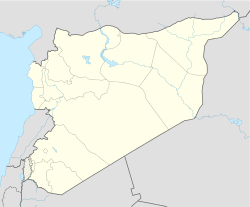

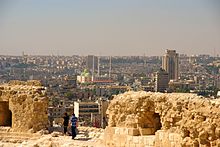
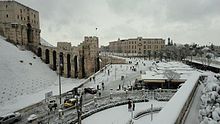
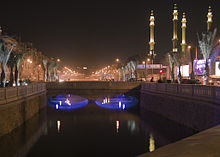
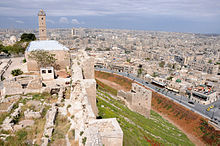

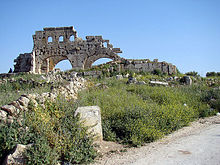
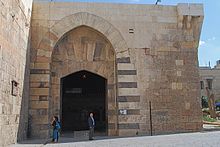
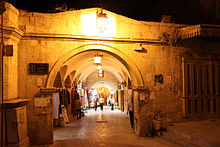
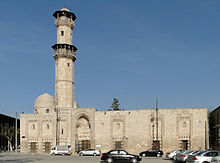
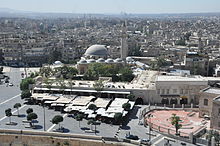
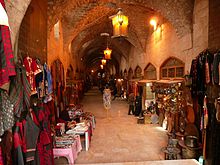
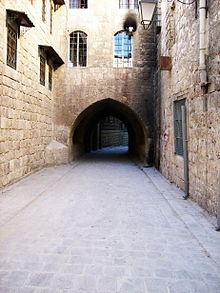
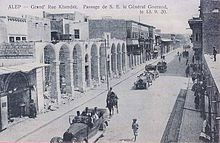
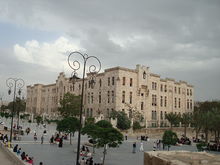
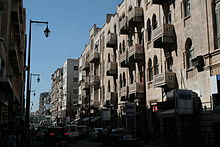
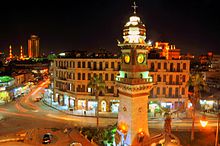
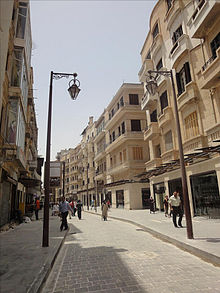
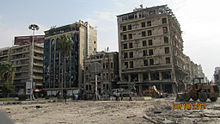
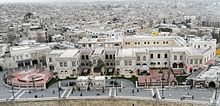
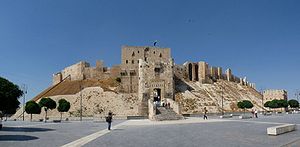
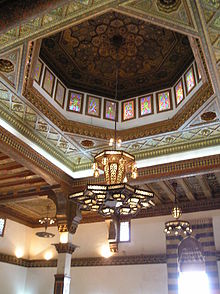

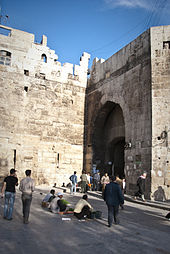

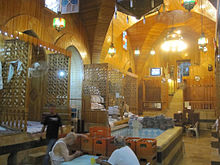
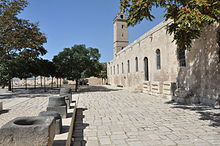
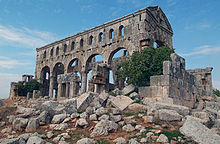
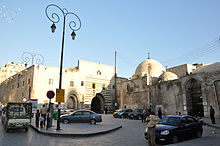
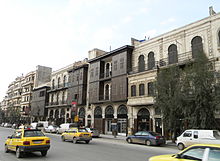
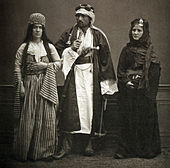
.jpg)
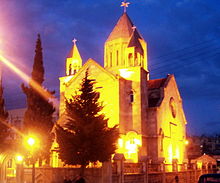
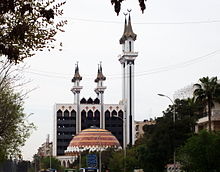
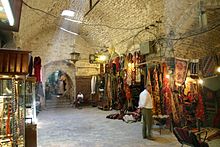
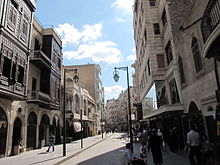
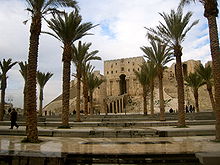
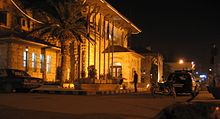
_cropped.jpg)
